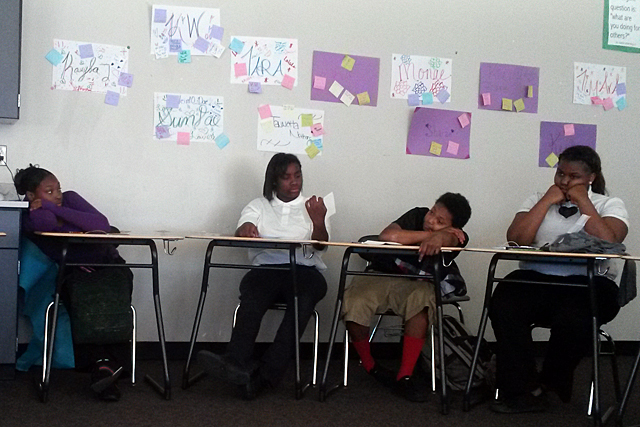Fifteen Detroit schools lengthened the school day by 24 minutes and the year by 35 days, writes Sarah Butrymowicz on the Hechinger Report. The state took over the failing schools in 2012.
Southeastern High School of Technology and Law lost 400 students — half its enrollment — in the last two years. About half the missing students transferred, estimates Jeff Maxwell, who recently resigned as principal. The other half dropped out.
“A year-round school with a sound program is a great idea,” said Chris Savage, community activist and author of the Eclectablog. “They need to get their program in order.”
The state’s Education Achievement Authority is trying new approaches.
Grade levels were dropped as teachers were encouraged to divide students strategically and to let them collaborate in small groups. All students use an online curriculum to go through lessons at their own pace.
. . . Computer usage starts with an hour a day in kindergarten, but high schoolers at Southeastern might spend most of the day on netbooks. This means that high school teachers are responsible for monitoring students’ progress and meeting with them one-on-one, rather doing whole-class lectures.
In a daily advising session devoted to social and emotional learning, students discuss topics such as “bullying, fighting and skin color,” writes Butrymowicz.

Students at Detroit’s Southeastern High discuss their self-esteem during the daily advisory period. (Photo: Sarah Butrymowicz)
In the 2012-13 school year, the Education Achievement Authority claimed that 64 percent of students achieved at least a year’s worth of growth in reading and 68 percent did so in math on internal assessments.
But the students’ state standardized test scores told a different story, concluded Thomas Pedroni, an associate professor at Wayne State. He found that 58.5 percent of students showed no reading progress from 2012 to 2013, and 78.3 percent made no gains in math. More than four in five students who scored proficient in math in 2012 did worse in 2013.
Malik Canty, 17, stuck with Southeastern. He told Butrymowicz he’d read only one book on his own, Percy Jackson and the Titan’s Curse, in his first 12 years of public school. By graduation this month, he’ll be up to two.
He plans to go on to community college. Eventually, he’d like to study medicine at the University of Michigan.




















